#elasmobranch
Photo

39K notes
·
View notes
Text
man’s resisting the urge to petpet soooooo hard

#chondrichthyes#elasmobranch#euselachi#hexanchiformes#hexanchus griseus#h. griseus#bluntnose sixgill shark#cow shark#shitpost#meme#gif#redondo#wa#washington#puget sound#sharks#fish#diver#rebreather#ccr#technical diving#tec#tech#diving
58K notes
·
View notes
Text
THREE NEW SHARK SPECIES THIS WEEK!
The second week of July 2023 something extraordinarily beautiful happened, the findings of 3 new species of sharks for were announced
A new angel sharks species was identified, from the western Indian Ocean on the Mascarene Plateau and off southwestern India in 100–500 m depths, the Lea’s angel shark Squatina leae, was recognized to be different genetically and morphologically distinct from its congeneric species Squatina africanae, following unique morphological features. This species was first detected in 1988 after finding three unusual, small sharks, but till today was completely understood. The angel shark is named after one of the author’s fiancee’s late sister, Lea-Marie Cordt.

- Squatina leae, adult male, in dorsolateral.
Angel sharks are “flatter sharks”, possesing distinctly broad, dorsoventrally flattened bodies, a short snout with large mouth and nostrils, eyes on top of the head close to the large spiracles, very large pectoral fins, and a lateral caudal keel. They've evolved to be ambush predators, they lie in wait for prey to pass closely overhead before attacking.
Reference (Open Access): Weigmann et al., 2023. Revision of the Western Indian Ocean Angel Sharks, Genus Squatina (Squatiniformes, Squatinidae), with Description of a New Species and Redescription of the African Angel Shark Squatina africana Regan, 1908. Biology
From North Australia, another species of hornshark is described based on six whole specimens and a single egg case. The painted hornshark Heterodontus marshallae was previously considered to be the same with the zebra bullhead shark another well know bullhead shark from the central Indo-Pacific from Japan to Australia, but genetic and morphological analyses indicated the sharks were different, but looking alike. The painted hornshark is endemic to northwestern Australia and occurs in deeper waters, at 125–229 m below surface.

- Lateral view of two mature female painted hornshark Heterodontus marshallae showing small differences between individuals
The painted hornsharks is named in honour of Dr. Lindsay Marshall www.stickfigurefish.com.au a scientific illustrator and elasmobranch scientist who expertly painted all the sharks and rays of the world for the Chondrichthyan Tree of Life Project.
Reference (Open Access): White et al., 2023 Species in Disguise: A New Species of Hornshark from Northern Australia (Heterodontiformes: Heterodontidae). Diversity.
And from an unidentified shark egg collected from the deep waters of northwestern Australia, in 2011 recently helped researchers identify a new species of deep water cat shark. Called ridged-egg catshark Apristurus ovicorrugatus after its eggs, it was collected in the earlys 90 but remained unknown to date. This sharks presents white eyes, and is small in size, reaching less than a half meter in length. .
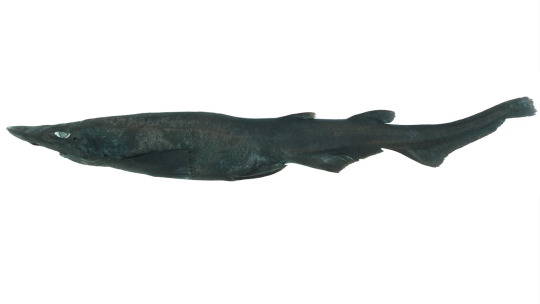
- Lateral view of female Apristurus ovicorrugatus before preserved. Photo by CSIRO.
Egg cases belonging to this species had been documented as early as the 1980s, but could not be matched to any species of Australian shark until recently scientists examined a shark specimen of previously uncertain identity in the CSIRO collection.

-egg cases of Apristurus ovicorrugatus. Scale bar is 10 mm
Reference (Open Access) White,et al., 2023 What came first, the shark or the egg? Discovery of a new species of deepwater shark by investigation of egg case morphology. Journal of Fish Biology.
#Squatina leae#Squatina#new species#elasmobranch#shark#biology#marine biology#science#marine science#indian ocean#bioblr#sciblr#sci#painted hornshark#Heterodontus marshallae#Heterodontus#Apristurus ovicorrugatus#Apristurus#long post#Ridged-egg catshark#Lea’s angel shark
3K notes
·
View notes
Text
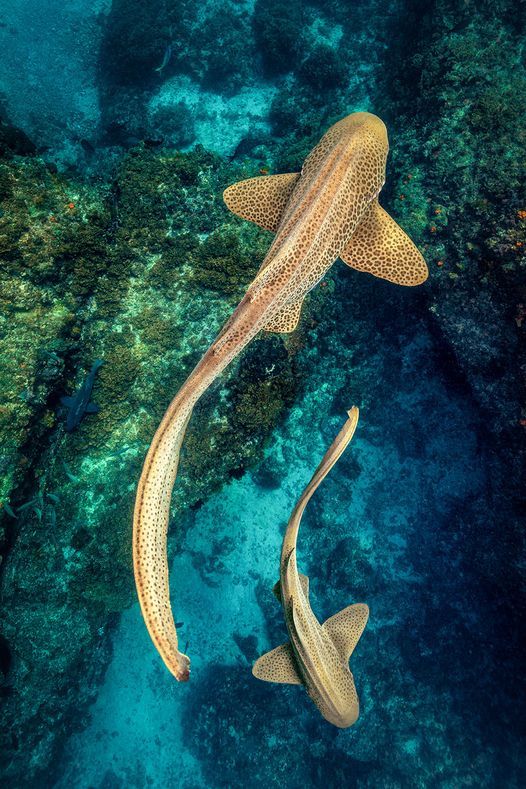
Zebra Shark (Stegostoma tigrinum), family Stegostomatidae, Byron Bay, NSW, Australia
ENDANGERED.
This shark gets its name from the appearance of the juveniles, which are striped.
In parts of its range, it is sometimes called the Leopard Shark. There is, however, another shark referred to commonly as the Leopard Shark. Triakis semifasciata, a kind of houndshark, that lives along the Pacific Coast of North America from Oregon to Mexico.
photograph by Jordan Robins Photography
782 notes
·
View notes
Text

Lessiniabatis aenigmatica was a rather strange stingray.
It lived around 50-48 million years ago during the early Eocene, in a shallow warm sea covering what is now Italy, with its three known fossil specimens all coming from the fish-rich Monte Bolca fossil beds.
About 60cm long (~2'), it had a round pancake-like body similar to many modern seafloor-dwelling stingrays – but uniquely it was also almost tailless, with only a tiny, slender, stingless tail.
It wasn't a particularly strong swimmer, instead probably spending most of its time buried in the muddy seafloor sediment. When on the move it likely swam along just above the surface of the seafloor using undulations of its fins, foraging for smaller bottom-dwelling animals like worms, molluscs, crustaceans, and fish.
—
NixIllustration.com | Tumblr | Patreon
#science illustration#paleontology#paleoart#palaeoblr#lessiniabatis#dasyatoidea#myliobatiformes#stingray#batoidea#ray#elasmobranch#chondrichthyes#cartilaginous fish#fish#art#sea pancake
484 notes
·
View notes
Text
🦈 Daily Shark Fact: 🦈
The origin of a Nurse Shark's name is not what you think. Unbelievably, it has nothing to do with hospital staff or bedside manner. There are two prevailing hypotheses explaining where the name ‘nurse’ shark came from. The first is that they get their name from the sucking motion they make with their jaws when they feed, which resembles a baby nursing. The second is that the name actually comes from either the Old English word for sea-floor shark, ‘hurse,’ or the Middle English word ‘nusse’, which means cat shark.

#nurse shark#sharks#shark blog#shark#cartilaginous fish#elasmobranch#advocacy for sharks#respect the locals#save the sharks#shark awareness#shark lover#just a girl who loves sharks#shark post#shark facts#facts about sharks#daily shark facts#fyp#shark tumblr#sharks of tumblr#the more you know#i love sharks#sharks are important#sharks are cool#sharks dont infest oceans#sharks are friends
445 notes
·
View notes
Text
Daily fish fact #542
Elasmobranch fish!
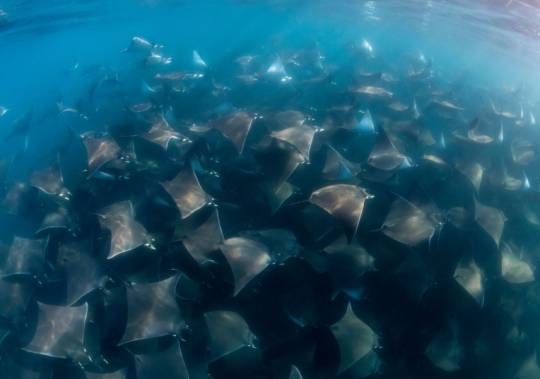
This subclass includes sharks, rays, skates, and sawfish! These fish share several features, like their dermal tenticles, male claspers, or lack of a swim bladder or opercular series — a group of bones that protect the gills and help with respiration. Elasmobranch fishes instead have several individual gill clefts!
#fish#fish facts#fishfact#fishblr#marine biology#biology#zoology#sharks#rays#skate#sawfish#elasmobranch
187 notes
·
View notes
Text
#poll#wet beast wednesday#spooky#halloween#ctenophore#cnidarians#crustaceans#crabs#elasmobranch#sharks#chimera#rays#fish#cephalopods#squid#marine animals#marine life#marine biology
89 notes
·
View notes
Text
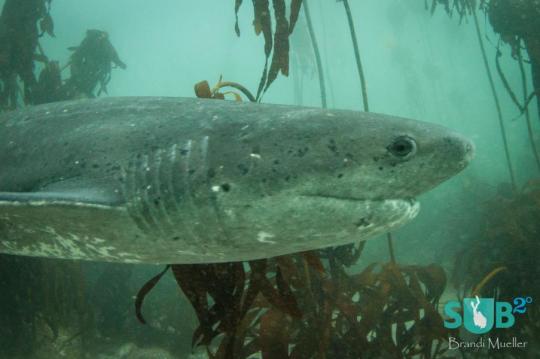
GOD I love cow sharks I researched them for like three days a few years ago and they're SO cool i'm gonna research them again so I can talk more about them and annoy everyone around me
52 notes
·
View notes
Text
Shark facts speed run !!!
Not all sharks need to be moving to breathe, for example the lemon shark can sleep stationary!
Sharks are colour blind, because of their photosynthesis they have difficultly differentiating colours!
Sharks are a special type of fish called a "elasmobranchs" which translates into fish made of cartilage!
There are over 30 shark species in the water around Sydney! The most common are; the port jackson shark, the crested horn shark, grey nurse sharks, wobbegongs, hammerhead sharks, bronze whalers, makos, and Dusky Whaler sharks.
39 notes
·
View notes
Text
I'm planning to start making stickers sometime within the next few months, and I'd like to see how many people would be interested in them.
I would make a variety of designs for stuff like fandoms (star trek, metalocalypse, elder scrolls, books, et cetera), animals (invertebrates, fish, maybe some mammals if you're lucky) and various other adjacent things... like wizards.
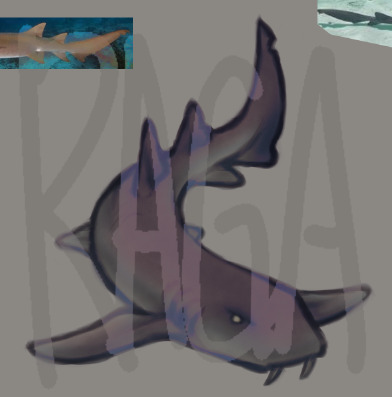
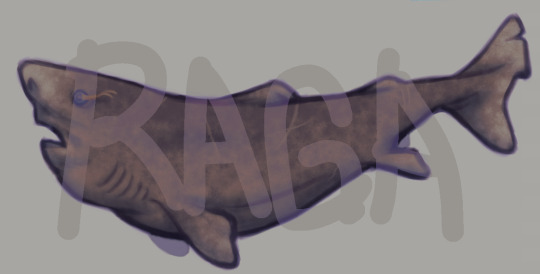
Right now, I'm working on some shark stickers to test out a simpler style that requires less time to produce but maintains the quality I'm aiming for.
#stickers#artists on tumblr#tesblr#art#artist#sharks#poll#interest poll#sticker making#the elder scrolls#metalocalypse#oblivion#skyrim#star trek#tes#biology#phylogeny#elasmobranch#arthropods#invertebrates#animals#sorry for all these tags#i want to reach a bunch of people#please share this if you don't mind#thank you :)
3 notes
·
View notes
Photo

Greenland shark (Somniosus microcephalus)
#greenland shark#shark#animal longevity#elasmobranch#fish#ocean#marine biology#nature#animals#ichthyology
9K notes
·
View notes
Photo
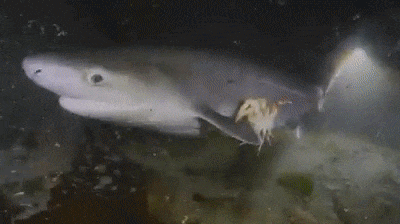
crab uber
#chondrichthyes#elasmobranch#hexanchiform#hexanchidae#hexanchus griseus#h. griseus#bluntnose sixgill shark#crab#crustacean#red rock crab#dungeness crab#invert#invertebrate#meme#shitpost#gif#puget sound#wa#washington#redondo#uber#lyft
33K notes
·
View notes
Text

STINGRAYS CAN MAKE CLICKING SOUND, ACCORDING TO NEW RESEARCH
New evidence, from oncidentally recorded observations of sound production obtained in the Magnetic Island on the Great Barrier Reef, Australia, shows that the mangrove whipray (Urogymnus granulatus) and the cowtail stingray (Pastinachus ater) can actively produce sounds. Juvenile mangrove whiprays appear to make loud clicking noises as an social behaviour related to fighting, either to warn off and startle predators or to signal to other nearby juveniles to aggregate in defense. Though it is clear that elasmobranchs, such as sharks, rays, and skates, can hear and respond to sounds in various ways, until now, there have been no confirmed examples of active sound production by this group in the wild.
The exact mechanism of sound production remains unclear but appears to be similar in both species. In all recordings, contractions of the spiracles and associated gill openings are visible simultaneously with theclicking sounds, indicating that sounds may beproduced through fast contractions of the cranial and gill area.
Photo: Juvenile mangrove whiprays displaying a typical high tide group overlapping behavior, by José Javier Delgado Esteban. Whale Nation Studio 2018–2023.
Video showing mangrove whipray emitting sounds
Reference (Open Access): Fetterplace et al., 2022. Evidence of Sound Production in Wild Stingrays. Ecology
#mangrove whipray#Urogymnus granulatus#elasmobranch#marine science#marine biology#sciblr#scienceblr#science#Pastinachus ater#cowtail stingray
499 notes
·
View notes
Text
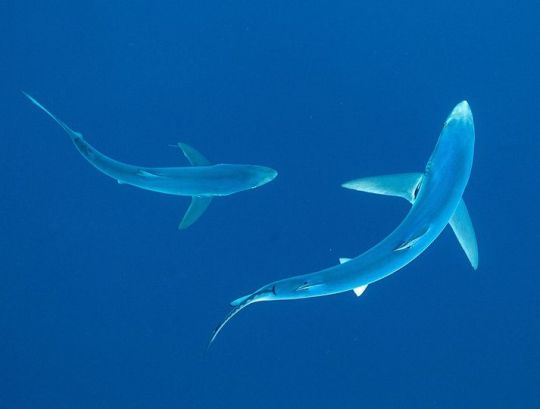
Blue Sharks (Prionace glauca), family Carcharhinidae, North Atlantic Ocean
photograph by David Miller
1K notes
·
View notes
Text

Anyone who suffers from anxiety has probably made facial expression to this before.
This delightful specimen is the thresher shark (Alopias vulpinus) and is also known as the fox shark or whiptail shark. This species reaches lengths of 2.5-7.6 m, although half of this measurement is accounted for by the caudal (tail) fin. This extreme adaptation is imperative to the threshers peculiar hunting strategy, as they are believed to deliver blows from the whip-like tail in order to stun schooling fish and squid.
#marine life#marine biology#marine animals#ocean#ocean animals#ocean life#sharks#chordata#elasmobranch
28 notes
·
View notes